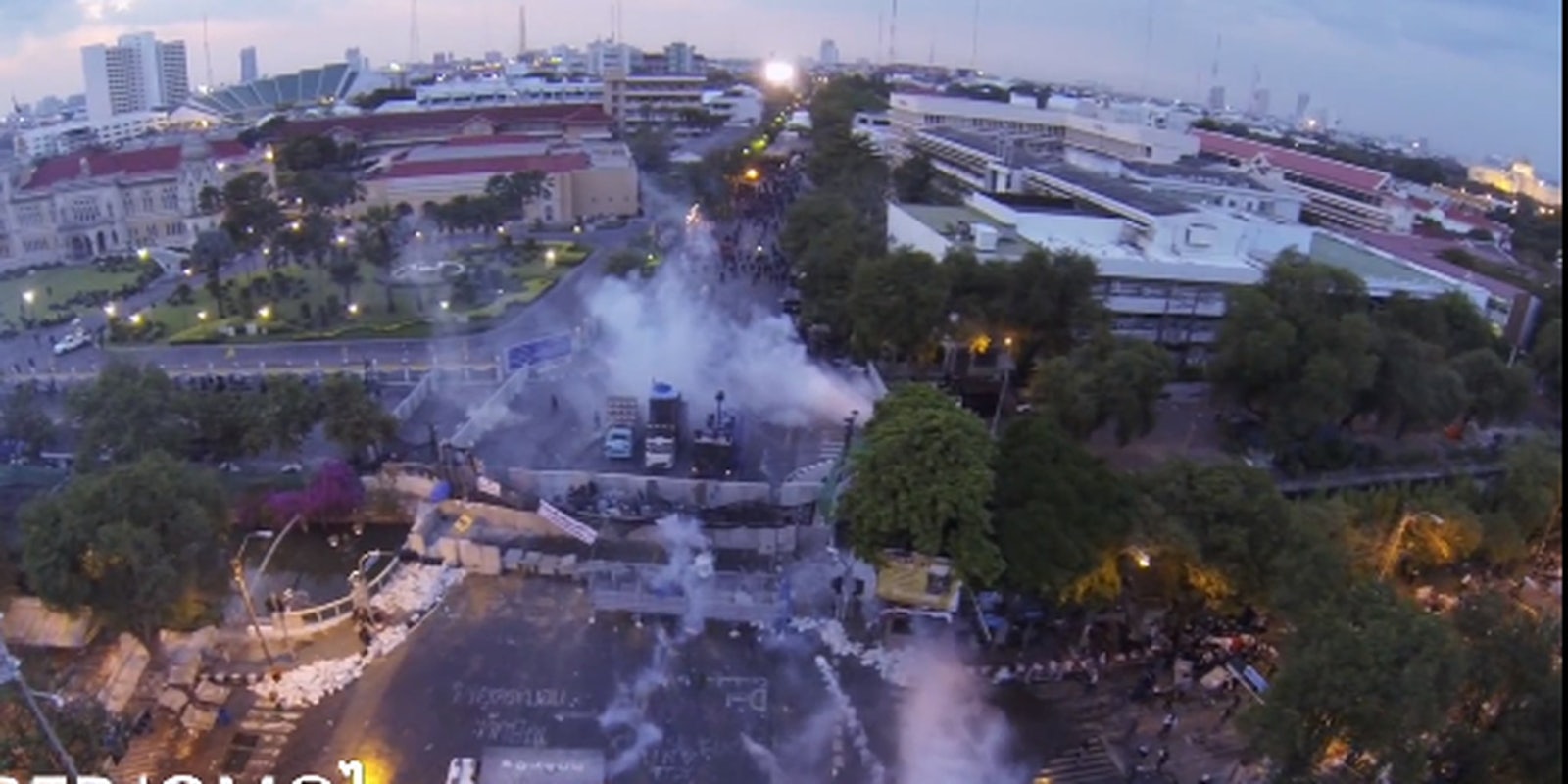BY MEGHAN NEAL
Four people have died and at least 100 have been injured during the escalating anti-government protests in Bangkok, as demonstrators fight to overthrow Prime Minister Yingluck and her allies. Reformists believe Yingluck is simply a proxy for her brother, former prime minister Thaksin Shinawatra, who was ousted in a 2010 military coup. Hundreds of thousands of protesters took to the streets last week in the biggest demonstration the polarized country has seen in three years. This time around, journalists are using drone cameras to capture unprecedented footage of the political turmoil.
News organizations and freelance journalists with camera-donned UAVs are shooting videos and photographs of the ongoing violent clashes between demonstrators and police. Police have taken to tear gas, rubber bullets, and water cannons to try to control the massive crowds, who are throwing gas canisters back at the cops.
Photo via Twitter
Ousted Prime Minister Thaksin, accused of widespread corruption, still has many loyal supporters in the country and his party maintains control of the parliament. Tension between pro-government supporters, referred to as “Red Shirts,” and the reformist Democrat opposition, “Yellow Shirts” was heightened when the Thai government passed an amnesty bill last month wiping corruption charges against Thaksin and allowing him to return to the country.
In the protests that followed, Yellow Shirts raided the country’s Finance Ministry and Foreign Ministry compounds, and cut electricity to the Department of Special Investigation (the Thai FBI). Dozens of schools and the UN’s Bangkok office have been closed. Prime Minister Yingluck made a plea to negotiate to restore peace yesterday, but opposition leadership said they would not stop until she had been removed from power so an unelected “people’s court” could pick a new prime minister. Yingluck has now fled to a secret location.
Meanwhile, drone footage of the infighting is circulating through news sites and across social media, such as on Twitter via the hashtag #ThaiDrone.
#Thaidrone ติดกล้องถ่าย บินอยู่เหนือ #ราชดำเนิน เก็บภาพมหาชนเกินล้าน pic.twitter.com/R8sDtcT7IK
— A Man From Sky (@amanfromsky) November 24, 2013
The detailed shots offer a new and more accurate perspective on the longstanding political violence in Thailand, where press coverage is notoriously partisan and biased. It can also help calculate the crowd size at demonstrations, often a point of dispute between the pro- and anti-government groups. At last week’s rally at Democracy Monument in Bangkok security forces estimated 100,000 protesters were present, while an opposition leader put the number closer to 400,000.
The Bangkok Post captured the rally at Democracy Monument. Photo via Facebook
As quadcopters become cheaper and easier to use, citizen drones and drone journalism are a growing trend. The unmanned planes are regularly used by media giants News Corp. and the Associated Press, often for disaster reporting: Drone footage of the typhoon in the Philippines discovered two dead bodies in the aftermath of the storm. According to Quartz, UAVs with cameras cost news outlets between $2,500 and $6,200—hardly cheap, but much less expensive than a regular helicopter.
Read the full story on Motherboard | Screengrab via YouTube


